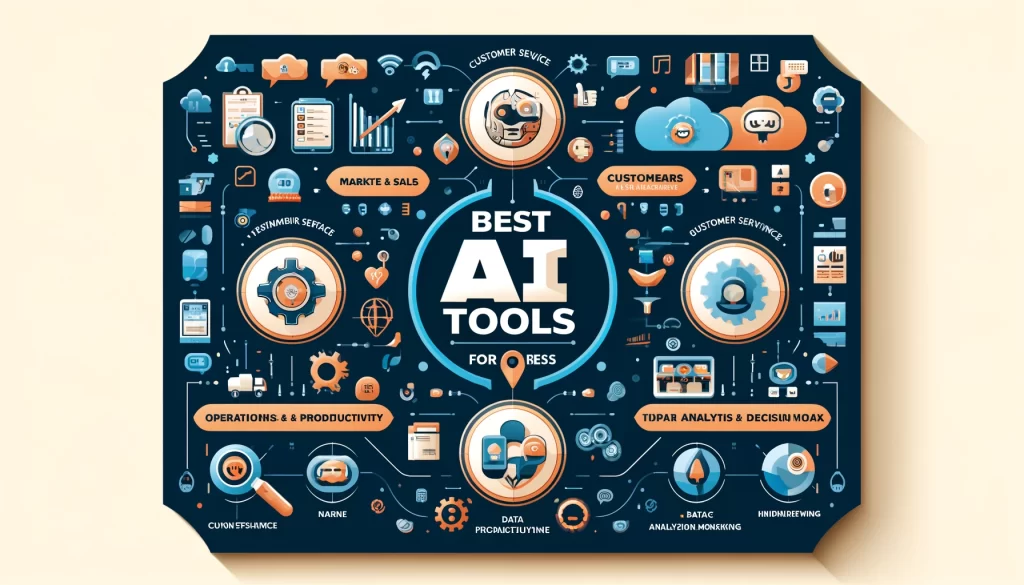
Artificial Intelligence (AI) is transforming the world of marketing, offering innovative solutions that can optimize campaigns, enhance customer experiences, and drive better business results. If you’re just starting to use AI in your marketing efforts, this guide will provide you with the essential knowledge to get started. Let’s explore how AI can be a game-changer for your marketing strategy.
1. Understanding AI in Marketing
AI in marketing refers to the use of artificial intelligence technologies to automate data collection and analysis, predict consumer behavior, and personalize customer experiences. AI can process vast amounts of data faster and more accurately than humans, making it an invaluable tool for marketers. Here are some key AI applications in marketing:
- Chatbots: Automate customer service and engagement.
- Predictive Analytics: Forecast future trends and behaviors.
- Personalization: Tailor content and offers to individual customers.
- Content Generation: Automate the creation of marketing content.
- Ad Targeting: Improve the precision of advertising campaigns.
2. Setting Up Your AI Marketing Tools
Getting started with AI in marketing involves choosing the right tools for your needs. Here are a few steps to help you set up your AI marketing tools:
Identify Your Goals
Before selecting AI tools, it’s crucial to define your marketing goals. Are you looking to improve customer service, increase engagement, or optimize your advertising spend? Clear goals will help you choose the most suitable AI solutions.
Research AI Tools
There are numerous AI tools available, each designed for specific marketing tasks. Some popular options include:
- Chatbots: Intercom, Drift, ManyChat.
- Predictive Analytics: Salesforce Einstein, HubSpot, IBM Watson.
- Personalization: Dynamic Yield, Evergage, Adobe Target.
- Content Generation: Copy.ai, Jasper, Writesonic.
- Ad Targeting: Google Ads, Facebook Ads, AdRoll.
Integration
Ensure that the AI tools you choose can integrate with your existing marketing platforms. This will streamline your workflow and allow for seamless data sharing between systems.
Training and Support
Opt for tools that offer comprehensive training and customer support. This will help you and your team quickly get up to speed with the new technology.

3. Implementing AI for Customer Engagement
One of the most popular uses of AI in marketing is enhancing customer engagement. AI-powered chatbots and virtual assistants can provide instant responses to customer inquiries, improving satisfaction and freeing up human agents for more complex tasks.
Chatbots
Chatbots can handle a wide range of customer interactions, from answering common questions to processing orders. They can operate 24/7, ensuring your customers always have access to support. Here’s how to implement chatbots effectively:
- Define the Scope: Determine what tasks the chatbot will handle. Common uses include answering FAQs, guiding users through processes, and providing personalized recommendations.
- Choose a Platform: Select a chatbot platform that integrates with your website or social media channels.
- Train the Chatbot: Use historical customer interactions to train the chatbot. This will help it understand common queries and respond accurately.
- Monitor and Optimize: Regularly review the chatbot’s performance and make adjustments to improve its accuracy and effectiveness.
Personalized Recommendations
AI can analyze customer data to provide personalized recommendations, enhancing the customer experience and increasing sales. For example, e-commerce platforms can use AI to suggest products based on a customer’s browsing history and previous purchases.
4. Leveraging Predictive Analytics for Better Decision Making
Predictive analytics uses historical data and machine learning to forecast future outcomes. In marketing, it can help you understand customer behavior, optimize campaigns, and allocate resources more effectively.
Customer Segmentation
AI can segment your audience based on various criteria such as demographics, behavior, and purchase history. This allows you to create targeted marketing campaigns that resonate with specific groups.
Campaign Optimization
Predictive analytics can help you identify which marketing strategies are likely to be most effective. For instance, it can analyze past campaign performance to predict the success of future efforts, enabling you to allocate your budget more wisely.
Sales Forecasting
AI can analyze trends and historical sales data to predict future sales. This can help you set realistic goals, manage inventory, and plan marketing activities more effectively.
5. Enhancing Content Marketing with AI
Content marketing is a crucial component of any digital marketing strategy. AI can assist in creating, curating, and distributing content more efficiently.
Content Creation
AI-powered tools can generate high-quality content quickly. Whether you need blog posts, social media updates, or product descriptions, AI can help. Here’s how to leverage AI for content creation:
- Content Ideas: Use AI tools like BuzzSumo or AnswerThePublic to generate content ideas based on trending topics and common search queries.
- Writing Assistance: Tools like Jasper and Copy.ai can help you write articles, social media posts, and other types of content.
- Editing and Proofreading: Grammarly and Hemingway can assist in refining your content by checking for grammar errors, readability, and style.
Content Curation
AI can help you curate content by analyzing what your audience finds engaging. Tools like Curata and Scoop.it can recommend relevant articles, videos, and other content that your audience will appreciate.
Distribution
AI can optimize the distribution of your content by determining the best times to post and the most effective channels to use. This ensures that your content reaches the largest possible audience.
6. Optimizing Advertising with AI
AI can significantly enhance the effectiveness of your advertising campaigns by improving targeting, bidding, and creative elements.
Ad Targeting
AI can analyze user data to create highly targeted ads. This means your ads will be shown to the people most likely to be interested in your products or services. Platforms like Google Ads and Facebook Ads use AI to optimize targeting.
Automated Bidding
AI can manage your ad bids in real-time, ensuring you get the best possible return on investment. Automated bidding strategies consider various factors, such as competition and user behavior, to adjust bids dynamically.
Ad Creative
AI can also help you create more compelling ad creatives. Tools like AdCreative.ai can generate multiple versions of an ad, testing them to determine which performs best.
Performance Analysis
AI can continuously monitor and analyze the performance of your ads, providing insights that help you refine your strategies. This allows for ongoing optimization and improved results over time.

Conclusion
Incorporating AI into your marketing strategy can seem daunting at first, but the benefits are substantial. From enhancing customer engagement and personalizing experiences to optimizing advertising and leveraging predictive analytics, AI offers numerous opportunities to improve your marketing efforts. By following the steps outlined in this guide, you can start harnessing the power of AI to drive better business outcomes. As you gain more experience, you’ll discover even more ways AI can help you achieve your marketing goals.
Take Action Bill Morrow/ja42


